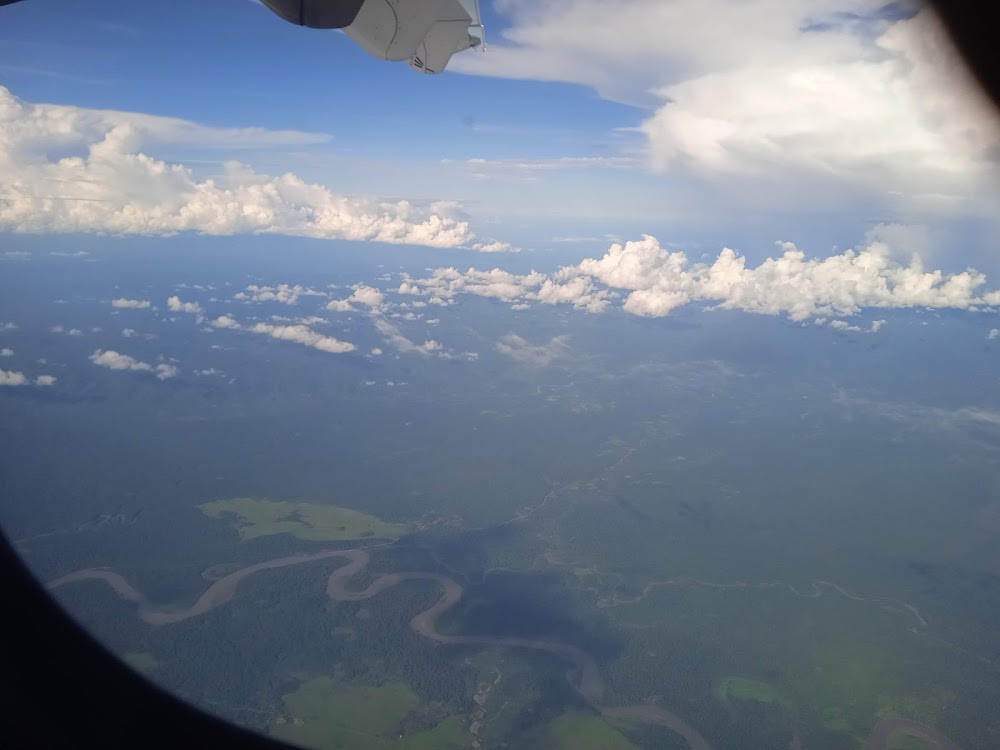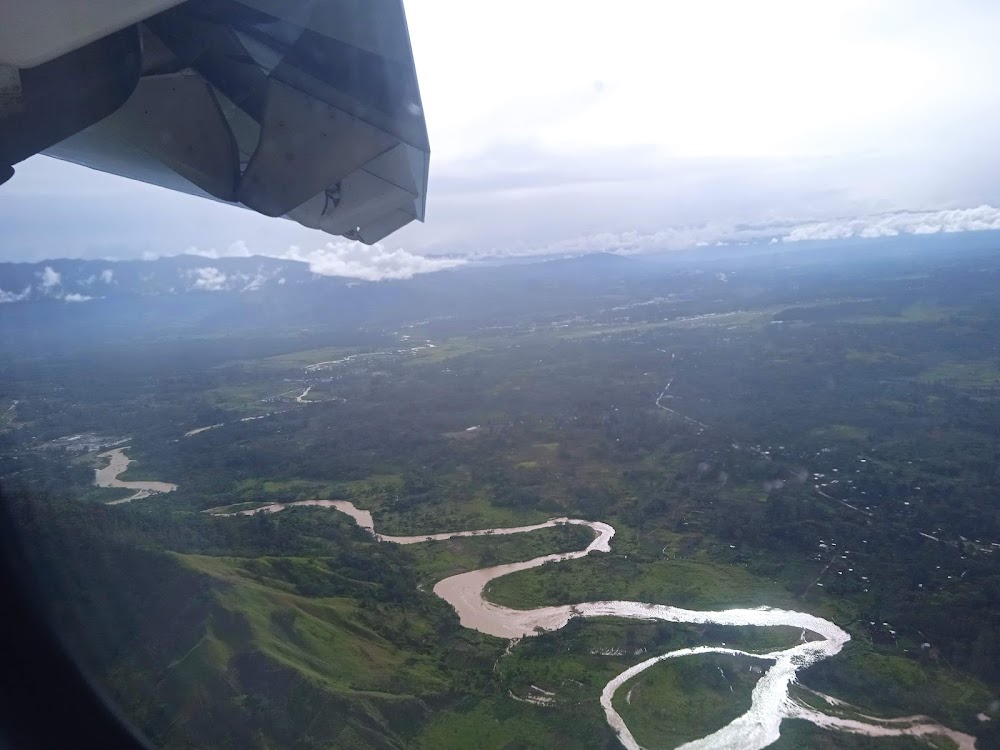Wahgi River (Wahgi River)
Related Places
Overview
The **Waghi River**, also known as the **Wahgi River**, is a vital waterway that gracefully winds its way through the lush landscapes of the **Western Highlands Province** in Papua New Guinea. For centuries, this river has served as a lifeline for local communities, providing essential water for agriculture, fishing, and daily activities.
The **creation of the Waghi River** is a fascinating tale, deeply interwoven with the natural history of the region. This majestic river originates from the fertile valleys of the Western Highlands, specifically from **Mount Wilhelm**, the tallest peak in Papua New Guinea. Eons ago, as the glacier-capped mountains began to melt, the cascading waters carved through the terrain, shaping the valleys and giving rise to the Waghi River.
Flowing southeast, the river cuts through rugged highlands, creating a verdant watershed. Over time, sediment deposits from upstream enriched the soil along its banks, transforming the **Waghi Valley** into one of Papua New Guinea's most significant agricultural hubs. Local communities have harnessed the river's waters for irrigation, cultivating an array of crops such as sweet potatoes, coffee, and various vegetables that thrive in this fertile basin.
The communities along the Waghi River have built their lives around its abundant resources. Traditional fishing and farming methods have been passed down through generations, fostering a sustainable way of life. The river's ecosystem supports diverse fish species and aquatic plants, which are vital for the diet and economy of local tribes.
Over the years, **bridges** spanning the Waghi River have become significant conduits for connection. From simple wooden constructions to modern structures, these bridges have enhanced trade and communication among communities. Investment from the government and local authorities has focused on improving infrastructure, ensuring safe passage for goods and people alike.
However, the Waghi River does present challenges. During the rainy season, heavy downpours can lead to flooding, impacting homes and farmlands. Communities have developed strategies to cope with these seasonal changes, anticipating the river's behavior and preparing accordingly. Initiatives such as constructing levees and strategically planning settlements help mitigate the effects of floods.
The **natural beauty** of the Waghi River is further enriched by the vibrant cultural tapestry of the highlands. Festivals and traditional ceremonies frequently unfold along its banks, filled with music, dance, and colorful costumes. These events foster a sense of community and celebrate the shared heritage of the people.
As development increases, **preserving the Waghi River's health** has become a crucial concern. Pollution from agricultural runoff and waste poses significant threats to the river's ecosystem. Environmental groups, alongside community initiatives, are actively working to clean the river and educate locals on sustainable practices.
In essence, the Waghi River is more than just a body of water; it is an integral part of the cultural and environmental fabric of the Western Highlands Province. Its flow defines the rhythm of life for countless Papua New Guineans, and ensuring its purity is vital for the well-being of future generations.






